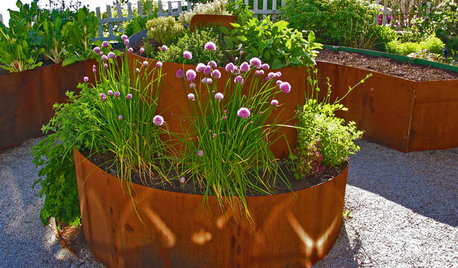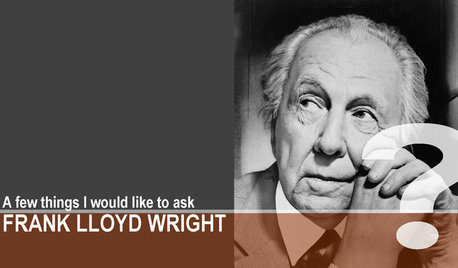A few questions about container growing
Linda's Garden z6 Utah
10 years ago
Related Stories

FARM YOUR YARDHow to Grow Vegetables in Containers
Get glorious vegetables and fruits on your patio with a pro’s guidance — including his personal recipe for potting mix
Full Story
FARM YOUR YARD10 Easy Edibles to Grow in Containers
These herbs, vegetables and fruits are just as happy in a pot as they are in the ground
Full Story
URBAN GARDENSContainers Make Growing Edibles a Cinch
If life hands you a lack of land, grow lemons — with a few basics, you can proudly reap the fruits, veggies and herbs of your labor
Full Story
FALL GARDENING5 Fall Fruits You Can Grow in Containers
Brighten your porch or patio with a potted pomegranate, kumquat, blueberry bush or another great fall fruit
Full Story
CONTAINER GARDENS8 Easy Container Plants to Grow From Seed
Get beautiful blooms and herbs in summer by starting these choice garden picks from seed in spring
Full Story
HOUSEPLANTSHow to Grow Orchids Indoors
Orchids are the exotic aristocrats of the flower world and can make themselves comfortable in almost any home
Full Story
ORGANIZINGPre-Storage Checklist: 10 Questions to Ask Yourself Before You Store
Wait, stop. Do you really need to keep that item you’re about to put into storage?
Full Story
ORGANIZINGDo It for the Kids! A Few Routines Help a Home Run More Smoothly
Not a Naturally Organized person? These tips can help you tackle the onslaught of papers, meals, laundry — and even help you find your keys
Full Story
COFFEE WITH AN ARCHITECTA Few Things I Would Like to Ask Frank Lloyd Wright
It could take a lifetime to understand Frank Lloyd Wright's work — less if we had answers to a few simple questions
Full Story
GARDENING GUIDESNo-Regret Plants: 5 Questions Smart Shoppers Ask
Quit wasting money and time at the garden center. This checklist will ensure that the plants you're eyeing will stick around in your yard
Full StoryMore Discussions






djimb
gardengal48 (PNW Z8/9)
Related Professionals
Wareham Landscape Architects & Landscape Designers · Bellefontaine Neighbors Landscape Contractors · Ramsey Landscape Contractors · Vallejo Landscape Contractors · Weslaco Landscape Contractors · West Orange Landscape Contractors · West Palm Beach Landscape Contractors · Shenandoah Landscape Contractors · Hueytown Landscape Contractors · Raytown Landscape Contractors · Castro Valley Fence Contractors · Chatsworth Fence Contractors · Midvale Fence Contractors · Yorba Linda Fence Contractors · Saratoga Springs Fence Contractorstapla (mid-Michigan, USDA z5b-6a)
Linda's Garden z6 UtahOriginal Author
tapla (mid-Michigan, USDA z5b-6a)
Embothrium
tapla (mid-Michigan, USDA z5b-6a)